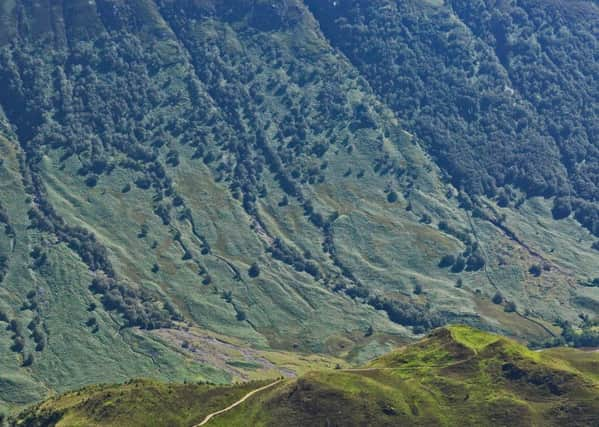Archaeologists solve ancient mystery of '˜melted' Iron Age fort


Over the years, a number of experiments have been carried out at Dun Deardail in Glen Nevis to establish how temperatures hot enough to fuse stones together, in a process called vitrification, were achieved at the fort, which latterly served as a Pictish citadel.
Dun Deardail, which was built around 500BC and served as both a Celtic fort and Pictish citadel, is one of at least 60 other vitrified sites in Scotland.
Advertisement
Hide AdWriter and broadcaster Arthur C Clarke said the country’s vitrified forts were the biggest mystery he had encountered and suggested that Stone Age people would need to be equipped with laser to achieve the results.
Conspiracy theorists have too shown an interest with claims including some sort of ancient superweapon was used to melt the stones.
Now, archaeologists from Forest Enterprise Scotland working with Stirling University and a squad of volunteers drawn from the area have been able to determine the source of the heat following a research project at the site.
It is now believed a timber superstructure supported by the ramparts was set alight, with the fire burning down on the stones and heating them up “like an oven”, according to Matt Ritchie, archaeologist with Forestry Enterprise Scotland.
Mr Ritchie said tests had shown blocks of molten stone were formed in anarobic conditions without oxygen and likely caused by a “tremendous heat from above”.
He said it was possible that the burning structure may have once stored grain.
Advertisement
Hide AdHe added: “This is really exciting – not only do we know have a better understanding of how vitrification occurred, but we can also know visualise these hill forts as citadels, with roofed rampart walls many metres high.”
Mr Ritchie added that the question of why the structure was burned was yet to be answered.
Advertisement
Hide Ad“Of course, the mystery of why the forts were burned remains unsolved. Was it accidental, or intended? Was it an act of destruction, by a victorious foe, or an act of ceremony, perhaps on the death of a revered king? We may never know,” he said.
Radiocarbon tests carried out on a nearby peat bog, which contained a thick layer of soot, suggests the site was probably built around 500 BC
The hillfort is overlooked by Ben Nevis and has breath-taking views over the surrounding glen.
Others vitrified forts includ Tap O’ North in Aberdeenshire and Ord Hill near Inverness.
Similar structures are found in parts of France, Germany Wales and Ireland. Remains of other vitrified forts can be found along the Great Glen Way with Dun Deardail providing a defensive site - and probably a status symbol - for its elite occupants.
The name of the hill fort could be linked with the ancient Irish myth, Deirdre of the Sorrows, it is believed.
The chieftain’s daughter who was said to be so beautiful that kings, lords and warriors fought and died to try to win her hand in marriage
